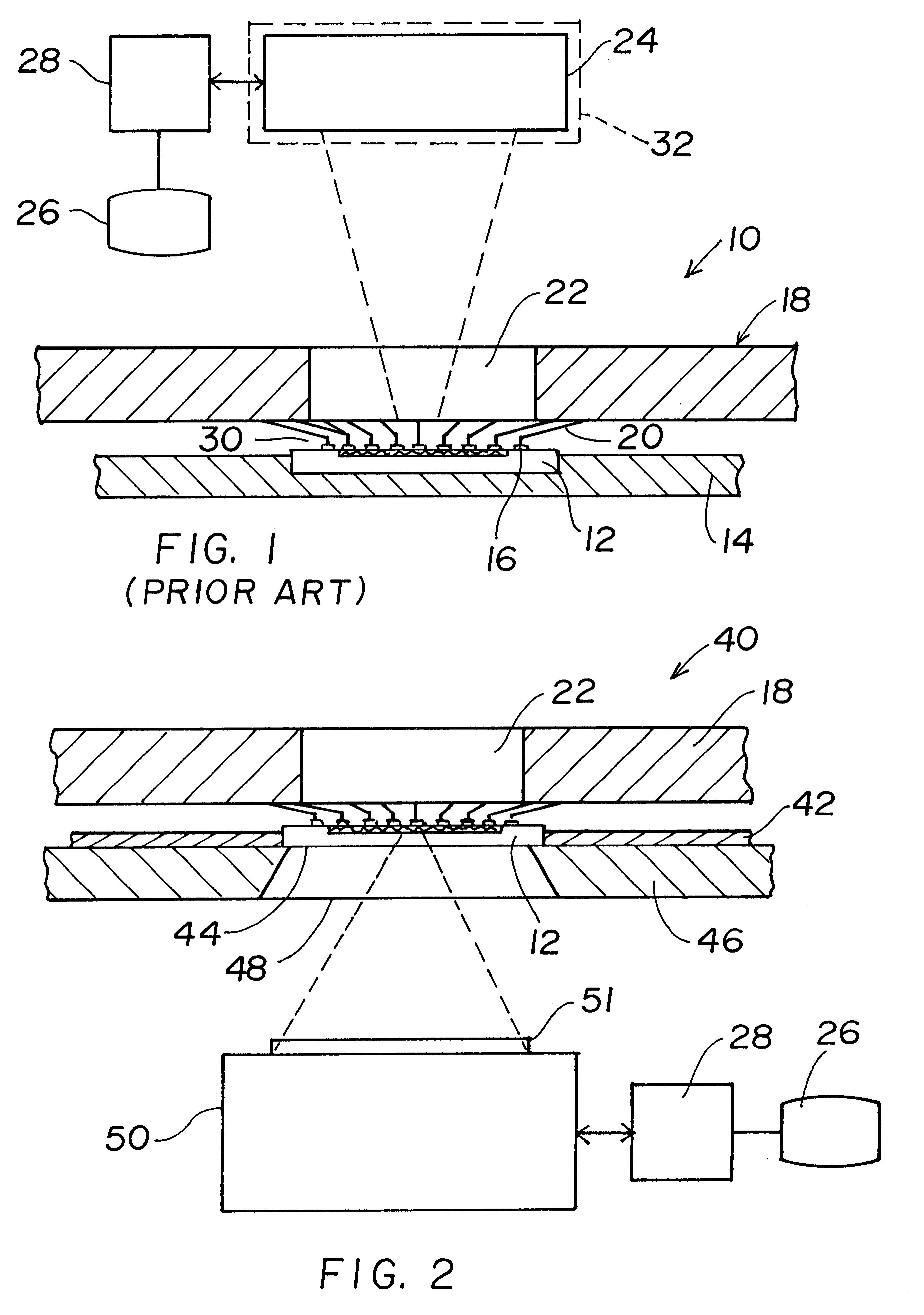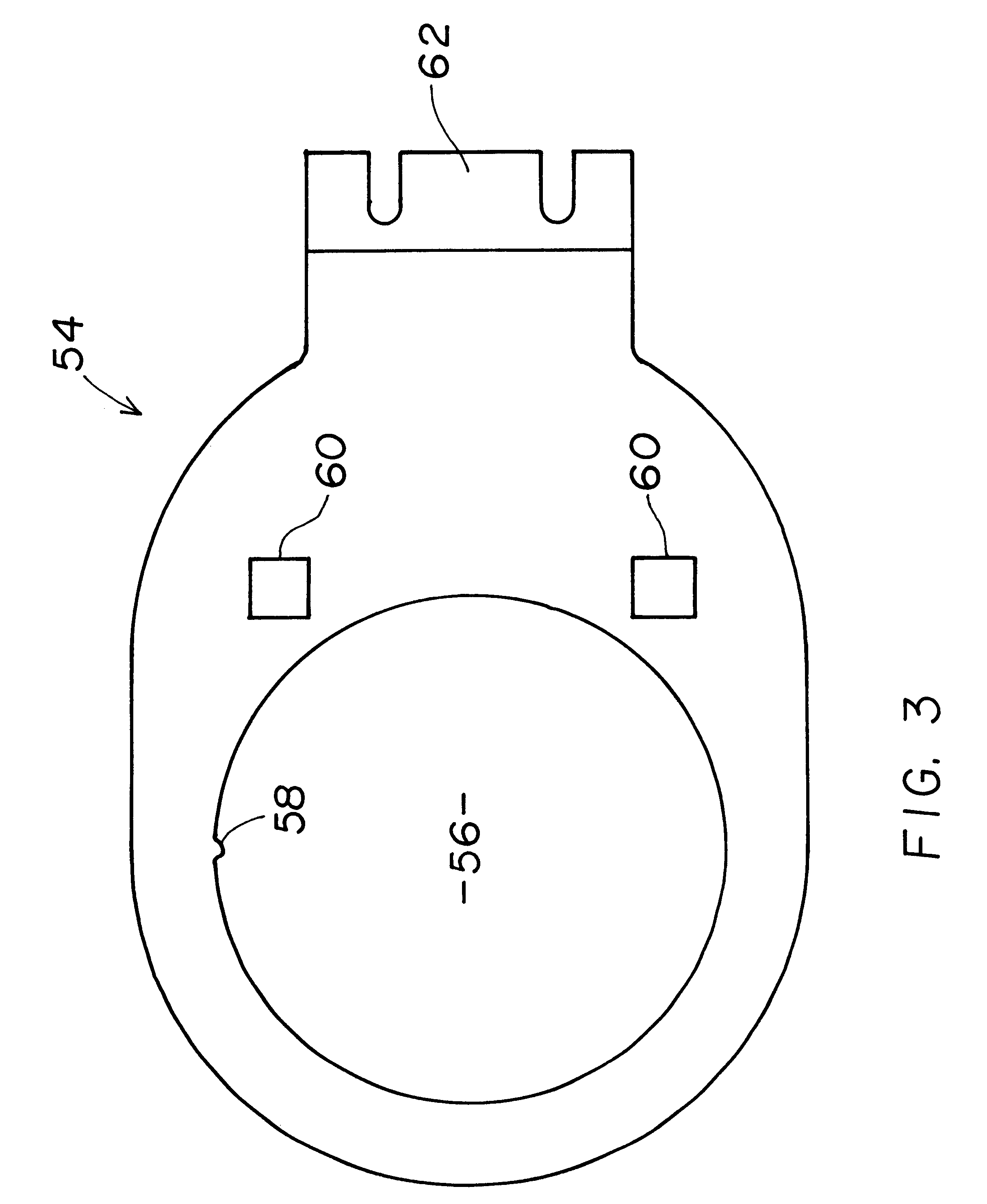Silicon wafer probe station using back-side imaging
- Summary
- Abstract
- Description
- Claims
- Application Information
AI Technical Summary
Problems solved by technology
Method used
Image
Examples
Embodiment Construction
The silicon material constituting the substrate of substantially all integrated circuits is transparent to wavelengths in the infrared range. Accordingly, this invention is based on the idea of utilizing an infrared camera to "see" through the silicon substrate of the integrated circuit from the bottom of the chip in order to align the contact pads with the tips of a probe card. Moreover, the same infrared camera can be used to image infrared hot-carrier and thermal emissions resulting from circuit faults for the purpose of failure analysis.
It is noted that the embodiments of the present invention are described with reference to x, y and z orthogonal coordinates wherein x and y define a horizontal plane parallel to the plane of the integrated circuit and z defines a vertical direction orthogonal to such plane, but it is obvious that the structure and operation of the features detailed herein could be rotated in any direction with equivalent results. The terms top and front are used ...
PUM
 Login to View More
Login to View More Abstract
Description
Claims
Application Information
 Login to View More
Login to View More - R&D
- Intellectual Property
- Life Sciences
- Materials
- Tech Scout
- Unparalleled Data Quality
- Higher Quality Content
- 60% Fewer Hallucinations
Browse by: Latest US Patents, China's latest patents, Technical Efficacy Thesaurus, Application Domain, Technology Topic, Popular Technical Reports.
© 2025 PatSnap. All rights reserved.Legal|Privacy policy|Modern Slavery Act Transparency Statement|Sitemap|About US| Contact US: help@patsnap.com



